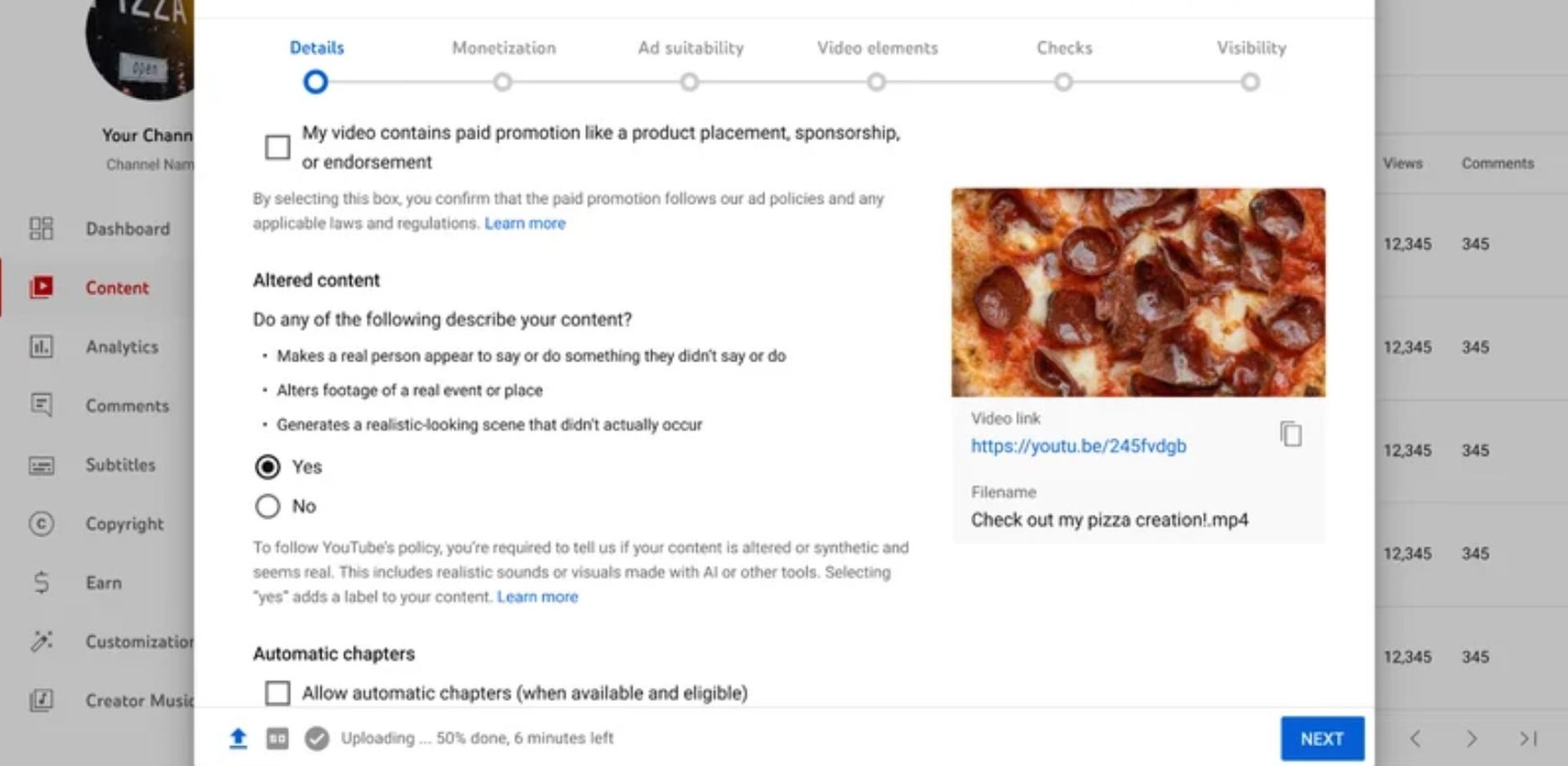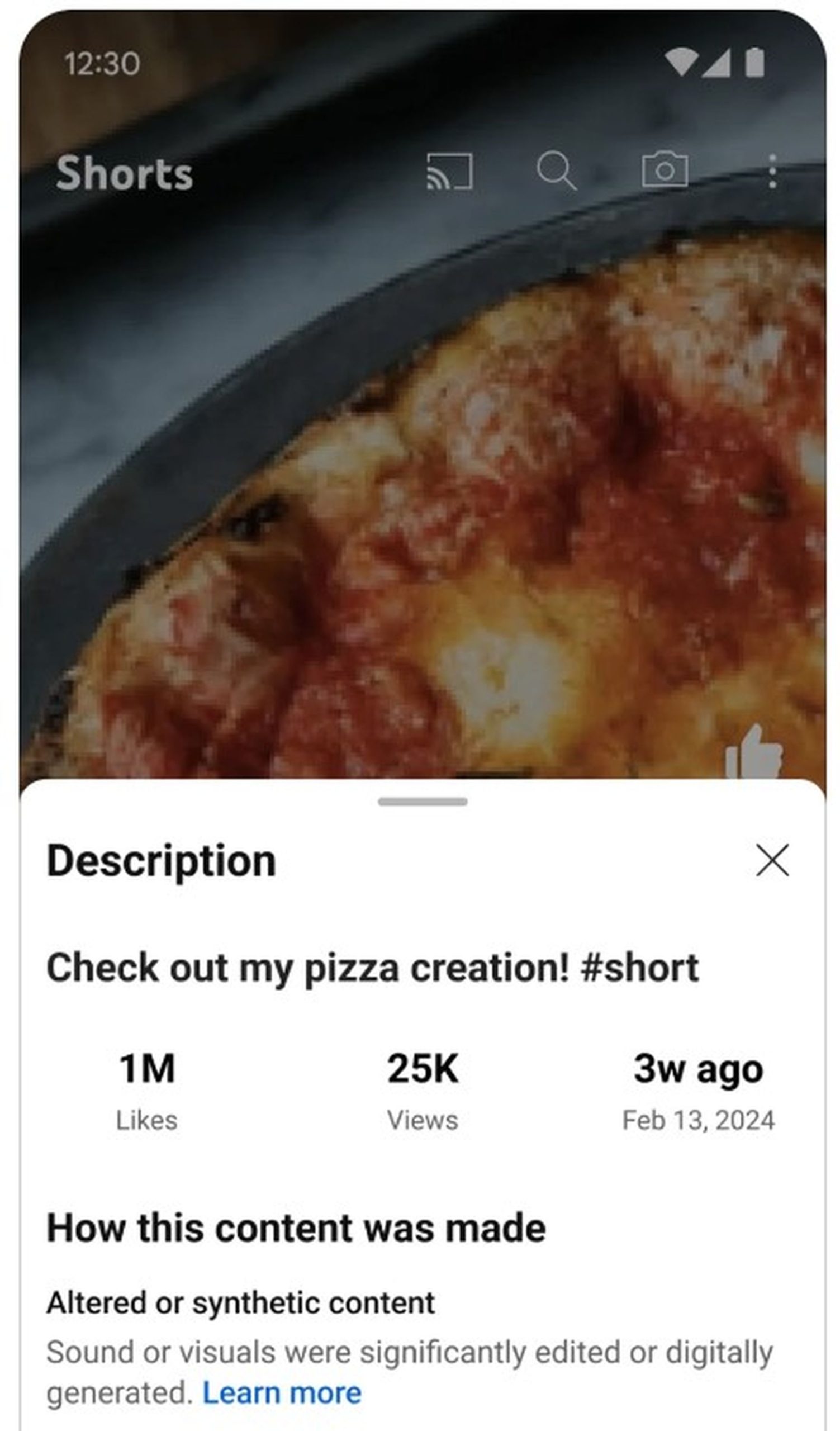YouTube has announced a new system allowing creators to self-tag AI-generated or synthetic material in their videos.
From now on, assessing the accuracy and transparency of the information circulating on the platform will be easier.
How will the YouTube tagging process work?
When creators upload and publish their videos, they will be presented with a checkbox asking if the video contains “altered or synthetic” content that appears realistic. “Altered or synthetic” content includes things like a real person saying or doing something they didn’t say, altering images of real events and places, or showing a “realistic-looking scene” that didn’t happen.

Which content will not be labeled?
“Clearly unrealistic content” such as beauty filters, background blur, special effects, and animation will not be labeled.
The situation is a little different in the music industry. Stricter rules will protect labels and artists. For example, deepfake music can be removed if the artist’s record label doesn’t like it.
What will people victimized by deepfakes do?
If deepfakes and their videos victimize an ordinary person are deepfaked, it won’t be easy to get them back. In such a case, a privacy request form must be filled out, which the company will review. YouTube said it is “continuing to work on an updated privacy process” for this process.
The AI content tags are based on the honor system. This means that creators must be honest about what appears in their videos. YouTube says it is “investing in tools” to detect AI-generated content, but AI detection software has been known to be highly buggy.

Tagging for sensitive topics
The video will also feature more prominent labels for sensitive topics such as health, elections, and finance. This will allow viewers to learn more about the video’s content and watch it in an informed way.
YouTube’s decision to tag AI-generated content is an important step towards increasing the accuracy and transparency of information circulating on the platform. Time will tell how effective this system will be.
Featured image credit: Szabo Viktor / Unsplash





